Ancient woodland part 2
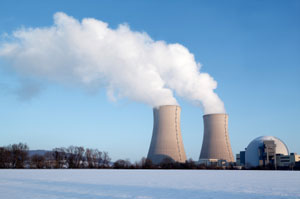
The wholesale destruction of ancient woodland through farming and forestry has diminished but new roads, bypasses and the installation of infra-structure & services (such as utilities & power lines) can still be a problem. In recent times, new or different threats to ancient woodlands have emerged to upset the balance of woodland ecosystems.
In the 1960’s and early 70’s concern focussed on the effects of air and acid rain pollution . Such pollution was characterised by the deposition of sulphur dioxide and its derivatives (sulphuric & sulphurous acid), plus various nitrogen oxides. Some of the most striking effects of this form of pollution were seen in the coniferous forests of Germany -Waldsterben (the die-back and death of various conifer species). Not only did these compounds affect the growth and form of many trees but they also damaged the lichen flora of the bark, trunk and branches. The loss of lichens from industrial regions had been noted back in the 19th century but was examined in detail by Gilbert (Lichen deserts) in the 1960's & 70's.
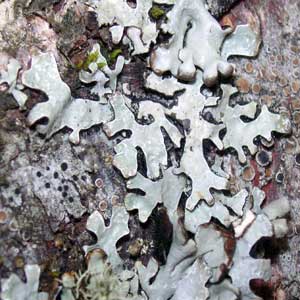 In more recent times, woodlands near to farmland have (sometimes) been exposed to various forms of nitrogen pollution from fertiliser dust, agricultural sprays, waste from cattle, bird excreta (after feeding on local crops). This nitrogen-based enrichment (not dis-similar to eutrophication of fresh water systems) is thought to affect the herb layer and ground flora of woodlands, the bryophyte community (the mosses and liverworts) and also the mycorrhizal (fungal) relationships between tree roots and soil fungi.
In more recent times, woodlands near to farmland have (sometimes) been exposed to various forms of nitrogen pollution from fertiliser dust, agricultural sprays, waste from cattle, bird excreta (after feeding on local crops). This nitrogen-based enrichment (not dis-similar to eutrophication of fresh water systems) is thought to affect the herb layer and ground flora of woodlands, the bryophyte community (the mosses and liverworts) and also the mycorrhizal (fungal) relationships between tree roots and soil fungi.
However, the greatest threat to ancient woodland is probably ‘neglect’ in the sense that they are not being managed. They are becoming shady. In the past, trees were felled as part of a coppicing cycle, ranging from 4 to 30 years. The majority of the plants in the herb layer are not adapted for deep or continuous shade; they are to be found in the spaces and openings offered by the periodic felling of trees, and in the ‘permanent’ open areas and on the edges of the wood. After coppicing, harvesting of wood, plants such as Anemone nemorosa and Viola reichenbachiana flower and seeds of Euphorbia and Hypericum germinate from the seed bank in the soil. Many of our ancient woodlands have not been managed for 50 or more years, consequently the various stages of infilling and regrowth are absent. With the loss of these habitats, the variety of the flora (and hence fauna – butterflies, nightingales, dormouse) is reduced. Rackham 2008* believes that this lack of management has affected many ancient woodlands in the UK. 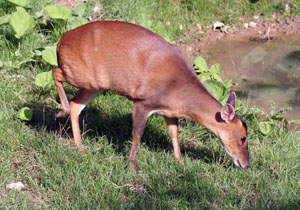
Alongside neglect, there has been the introduction of ‘large’ herbivores into many woodlands. Back in the ‘dark ages’ and early mediaeval times, woodland & woodland pasture were distinct entities. The former allowed for little or no grazing, whereas the latter was grazed by pigs, cattle, deer and sheep. The Parks and Royal Forest were home to red deer and roe deer (fallow deer were introduced later). In the 19th century, things changed. The numbers of deer increased dramatically, as did those of muntjac. Consequently, woodland now has more deer per hectare than the Royal Forests and Parks of the Middle Ages. Such (sudden) large numbers of deer have had significant effects on many woodlands – with over-grazing of many plants including the seedlings of trees species, such as Ash and Elm. Deer can reduce a species-rich woodland to a savannah-like area of grass and trees. With the loss of plant species, there is the concomitant loss of invertebrates (bees, butterflies, moths, ants, spiders, centipedes, millipedes), small mammals and birds. Natural England has produced a report on our lost or threatened species . Over time, the nature of the wood and its flora changes. Some of the activities of deer are described here. Where and when sheep have been introduced into woodland, the ground flora can be reduced to a few grassland species. In some areas, boar / wild pigs may have effects on the woodland ecosystem.
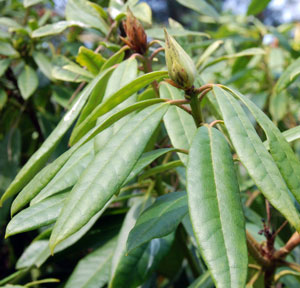 Deer could be described as ‘invasive species’ – a term that has more often been applied to plant species such as Rhododendron ponticum; this is rampant in some parts of the U.K. However, as Rackham says “the ground vegetation of ancient woods has been relatively resistant to invasive aliens". Nevertheless, some anxiety has arisen with respect to the native bluebell and its spanish counterpart. The grey squirrel is also an ‘introduced’ species and considered an invasive species by some given the damage to young trees.
Deer could be described as ‘invasive species’ – a term that has more often been applied to plant species such as Rhododendron ponticum; this is rampant in some parts of the U.K. However, as Rackham says “the ground vegetation of ancient woods has been relatively resistant to invasive aliens". Nevertheless, some anxiety has arisen with respect to the native bluebell and its spanish counterpart. The grey squirrel is also an ‘introduced’ species and considered an invasive species by some given the damage to young trees.
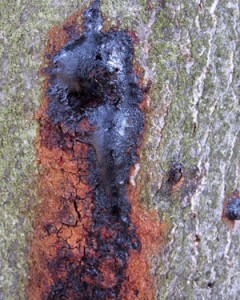 Add to the above ‘threats’, the introduction of pathogens plus that of climate change. As various ‘exotic’ species are introduced so are various fungal and bacterial pathogens associated with them. This risk is increased by the practice of growing young trees in one country and then exporting them to another. We do not quite know how the climate of the UK will be affected by rising levels of greenhouse gases. Higher levels of carbon dioxide affects the number of stomates (the tiny pores on the under-surface of leaves) of many plants. It may be that the UK will experience hotter, drier summers and / or the ambient temperature may rise by 3oC, but we do not know how such changes will affect our ancient woodlands. The drought of 1976 had a noticeable affect on beech on chalk soils. In 2005, some Spruces in eastern England failed. It may be that dry and hot conditions may affect the distribution of the bluebell. Rackham (2008, New Phytologist) reports that bluebells have shown a tendency (in recent times in some Cambridgeshire woods) to aggregate around the bases of trees.
Add to the above ‘threats’, the introduction of pathogens plus that of climate change. As various ‘exotic’ species are introduced so are various fungal and bacterial pathogens associated with them. This risk is increased by the practice of growing young trees in one country and then exporting them to another. We do not quite know how the climate of the UK will be affected by rising levels of greenhouse gases. Higher levels of carbon dioxide affects the number of stomates (the tiny pores on the under-surface of leaves) of many plants. It may be that the UK will experience hotter, drier summers and / or the ambient temperature may rise by 3oC, but we do not know how such changes will affect our ancient woodlands. The drought of 1976 had a noticeable affect on beech on chalk soils. In 2005, some Spruces in eastern England failed. It may be that dry and hot conditions may affect the distribution of the bluebell. Rackham (2008, New Phytologist) reports that bluebells have shown a tendency (in recent times in some Cambridgeshire woods) to aggregate around the bases of trees.
Climate change may also bring more unpredictable events such as storms, which may have the effect of ‘opening up’ woodland that has become shaded and overgrown.
- Rackham, O. Woodlands, Collins, 2010
- P Thomas and J Packham, Ecology of Woodlands and Forests, Cambridge University Press, 2007
- Rackham, O. Ancient Woodlands: modern threats. New Phytologist, 2008.
Comments are closed for this post.
